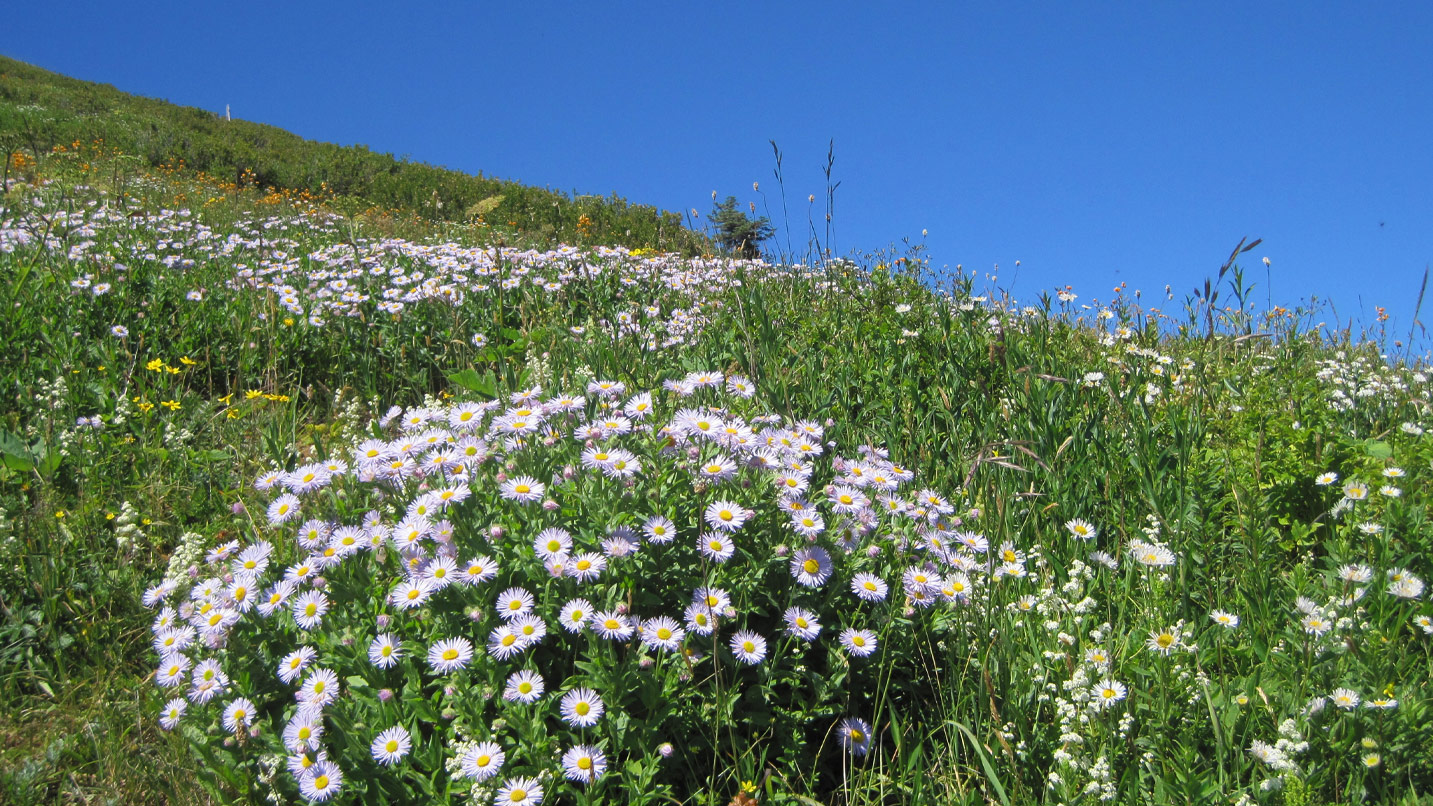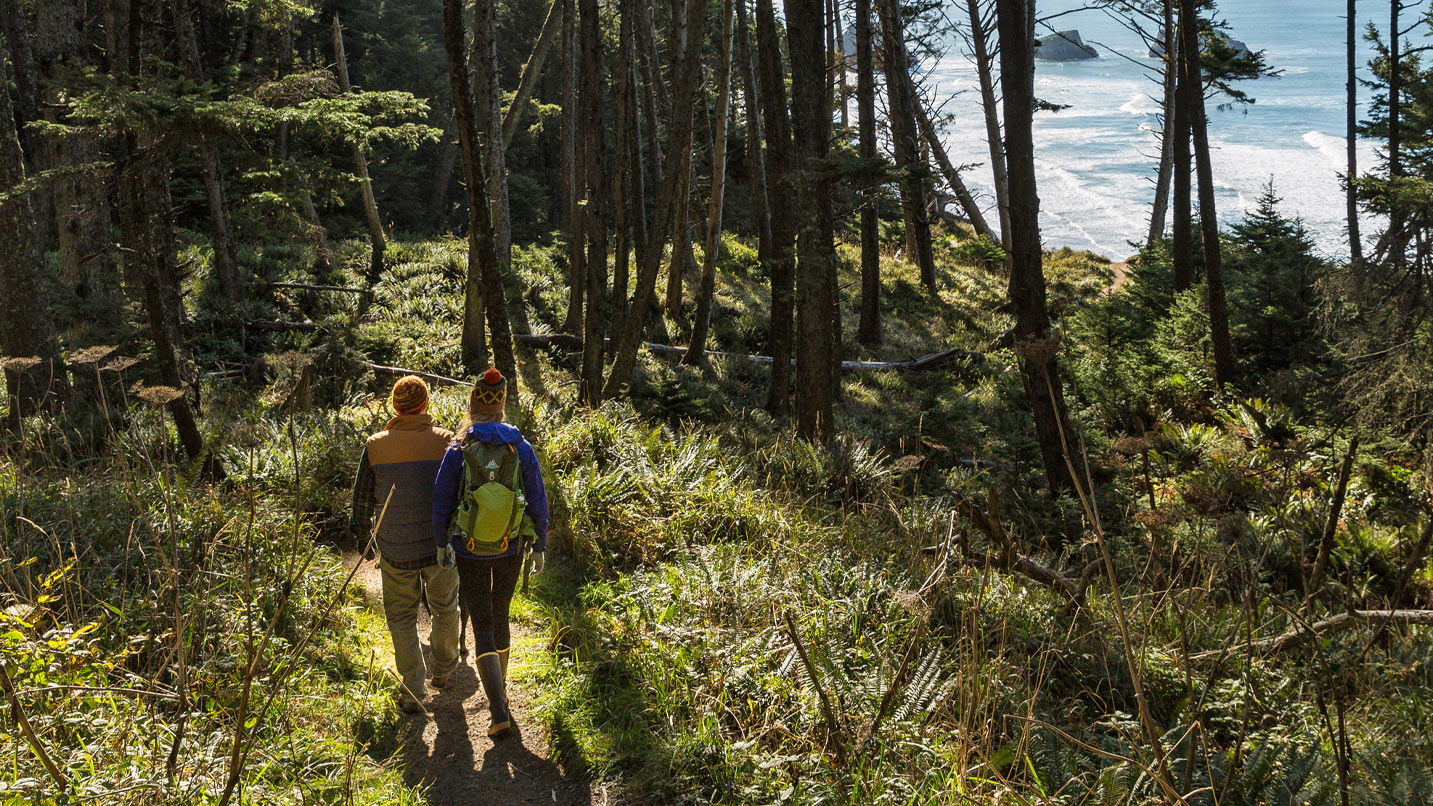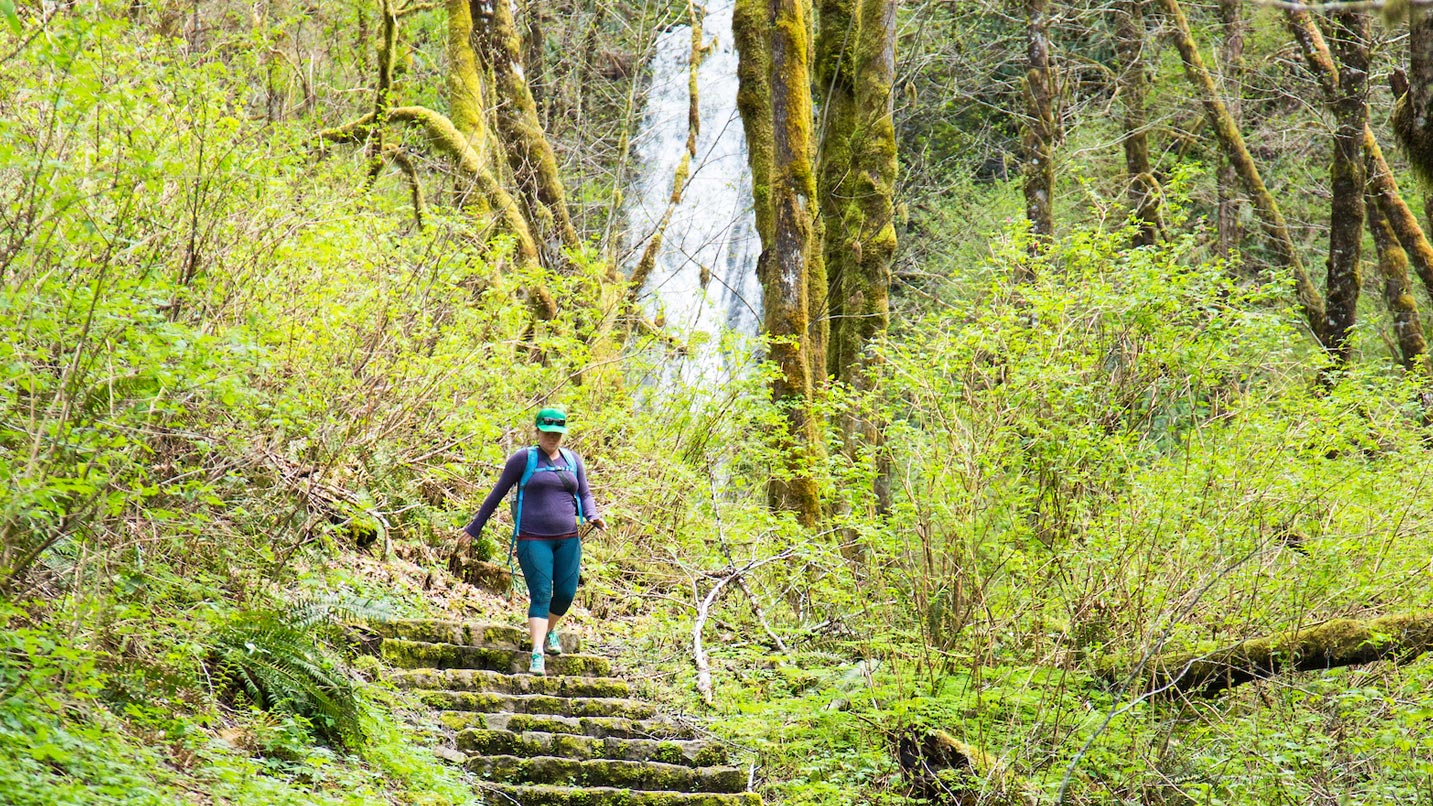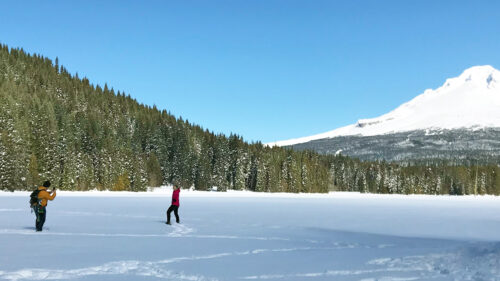No two trails are quite alike across Oregon’s North Coast — where countless hiking trails pass through diverse landscapes and show off the region’s natural wonders — ascending coastal mountains, providing miles of quiet riverside trekking and traversing old-growth groves of conifer trees. Whether you’re looking for a low-key stroll or a thigh-burning climb, you’ll find plenty to love about the region’s landscapes. Here are three notable North Coast hikes for a mix of what makes the Coast so special.

Panoramic Views From a Mountain Near Seaside
The signature trail at Saddle Mountain State Natural Area is among the Oregon Coast’s most iconic. Following a closure of roughly three years, the Saddle Mountain trail reopened in September 2023. Park officials spent much of that time installing vault toilets, repairing sections of trail and rerouting a stretch of path for improved safety.
Hikers embarking on the challenging, 5-mile round-trip trek ascend 1,900 feet while heading through old-growth forests and, between May and July, colorful displays of wildflower blooms. From atop Saddle Mountain, views include the Pacific Ocean to the west, Astoria to the north and snowcapped Cascade Range peaks to the east.
The park’s close proximity to Seaside — just 14 miles away via Highway 26 — makes it a popular destination. Try starting your hike early in the morning on sunny weekends to enjoy a bit more solitude, or go midweek. Bring plenty of drinking water, since none is available in the park. You’ll notice that portions of the trail are covered in gabion, a metal-mesh cage that’s filled with rocks to stop erosion and create a safer hike. This adds stability in dry weather but can become slippery when wet, so exercise caution if hiking soon after rainfall.

Rugged Coastline Hike Near Cannon Beach
Ecola State Park sits just north of Cannon Beach just above a rugged coastline that’s filled with sea stacks and craggy bluffs. A handful of trails crisscross the park and offer sweeping views, but the 4.2-mile round-trip Ecola Point to Indian Beach hike traverses several highlights on Tillamook Head.
Before departing from the Ecola Point day-use area, near the southern edge of the park, keep an eye out for resident elk, many of which enjoy grazing in the clearings that surround the parking lot.
From there the trail heads inland and away from the coast — a relatively recent change that improves safety and keeps hikers away from nearby landslides. Along the way, the trail climbs about 875 feet, passes through a dense forest of Sitka spruce and ends at Indian Beach — a small cove that protects against the area’s winds and affords views of the long-decommissioned Tillamook Rock Lighthouse just offshore. Look for Oregon Film Trail signs noting famous scenes from “Point Break” and other films.
Note that the trail can be muddy in all seasons. Come prepared with the appropriate footwear, and have a change of shoes and socks ready back at your vehicle. A $5 day-use fee is required and can be paid on the road to Ecola Point.

Nature and History in the Forests Near Tillamook
With a trailhead about 20 miles northeast of Tillamook in the Oregon Coast Range, the 20.6-mile Wilson River Trail dazzles with pristine forests and occasional wildlife sightings while largely following its namesake waterway. Best of all: Several trailheads make it easy to hike shorter portions of the longer path.
This under-the-radar trek, measuring about 7 miles round-trip, starts at the Jones Creek day-use area and heads west through a forest of fir and maple — all before ending at the footbridge trailhead along Highway 6. Springtime reveals a glimpse of the 200-foot Wilson Falls; summer offers plenty of chances to splash about in the Wilson River; fall brings salmon sightings and colorful foliage displays; and winter means a quieter, typically ice- and snow-free hike away from the crowds. All year long, waist-high sword ferns and droopy, moss-covered trees line the gently graded trail.
If time allows, take the opportunity for a post-hike visit to the Tillamook Forest Center near the trailhead. The museum, typically open between early March and late November, hosts a mix of interactive cultural and natural-history exhibits, films, and displays that cover the dramatic past of the surrounding Tillamook State Forest. Parking is available at the museum and trailhead.



